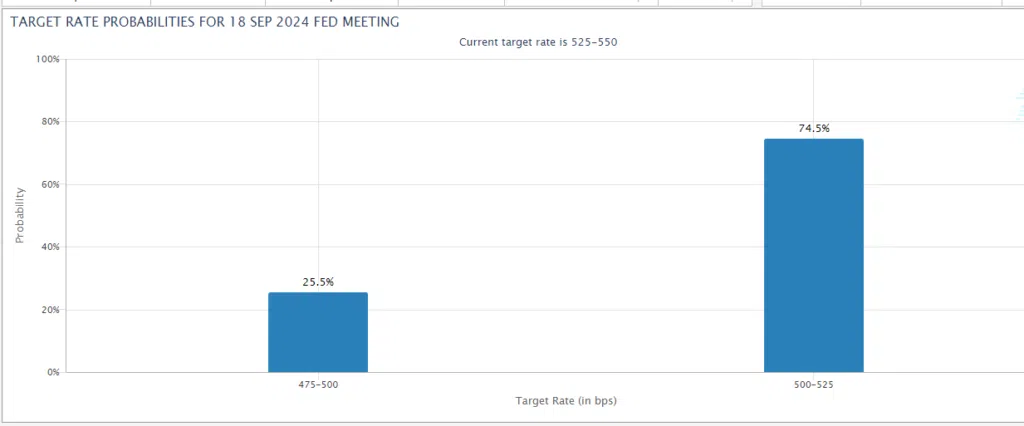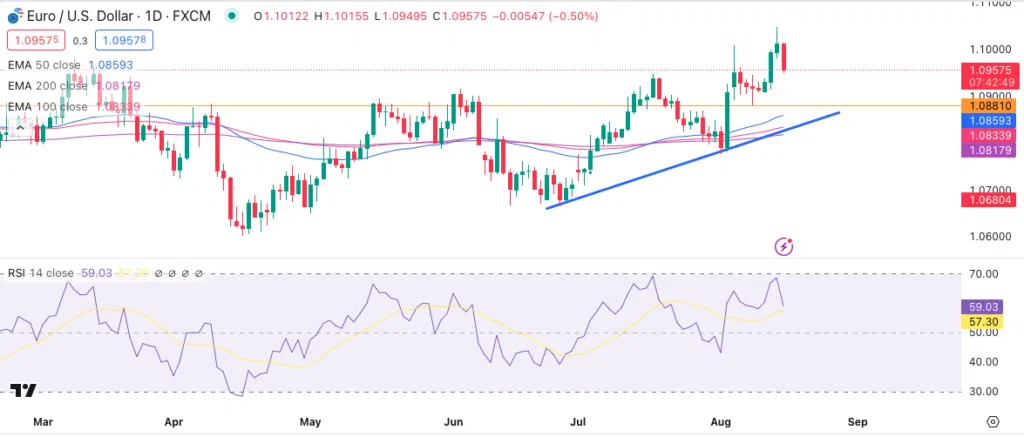-
Best Forex Brokers
Our top-rated Forex brokers
-
Islamic Account Brokers
Best accounts for Muslim traders
-
Brokers for Beginners
Start trading here
-
Forex Demo Accounts
Learn to trade with no risk
-
No-deposit Bonuses
Live trading with no deposit
-
ECN Brokers
Trade with Direct Market Access
-
Lowest Spread Brokers
Raw spreads & low commissions
-
High Leverage Brokers
Extend your buying power
-
Market Maker Brokers
Fixed spreads & instant execution
-
MetaTrader 4 Brokers
Top MT4 brokers in Malaysia
-
MetaTrader 5 Brokers
Top MT5 brokers in Malaysia
-
TradingView Brokers
Top TradingView brokers
-
cTrader Brokers
Top cTrader brokers in Malaysia
-
Forex Trading Apps
Trade on the go from your phone
-
Copytrading Brokers
Copy professional traders
-
All Trading Platforms
Find a platform that works for you
US inflation data released yesterday showed that the US economy continues to cool, as inflation slipped to 2.9%. Core CPI, which excludes volatile food and energy prices, rose by 3.2%, compared with 3.3% in June.
In response, the USD posted its second straight day of losses against the EUR and other currencies. The USD was already on the slide following Tuesday’s PPI data release, showing that the price of manufactured goods had risen less than expected.
But today’s surprise data put paid to the dollar’s fall, with retail sales up 1% vs 0.3% expected – the biggest increase since January 2023. Initial jobless claims also fell slightly, down to 227k vs 245k expected. The USD rebounded strongly, with the EUR/USD falling below 1.095 before stabilising.
The Fed will take heart from the recent figures and will remain hopeful that they can bring the US economy into a soft landing, especially given recent events.
A sharp decline in jobs growth two weeks ago shook the markets, as many analysts feared that the Federal Reserve had waited too long to lower rates, thereby ushering in a recession. Markets have steadied since and are buoyant after today’s retail sales. But with a September rate cut a near certainty at this point, the big question is whether it will be 25bps or 50bps.
Before yesterday’s data release, investors were evenly split over whether the central bank would deliver a quarter-point or half-point reduction. Following the CPI data, expectations for a half-point rate cut lost traction in favour of a smaller move. Following the unexpected rise in retail sales, the chances of a 50bps cut look even slimmer, with the CME FedWatch Tool showing a probability of a 25-bps rate cut increasing to nearly 75%.

“The bottom line is that this keeps the Fed on track for 25 basis points in September,” said Dean Maki, chief economist at Point72. “I think that for the Fed to cut by 50 basis points in September would require a further weakening in the labour market.”
While today’s retail and employment data have had an impact, the NFP release on September 6 could be the most important of the year. Another weak NFP and the chances of a 50bps rate cut come back into focus. This could lead to a significant rise in the EUR/USD as European and US interest rates end their divergence.
Technical Analysis
With all the mixed data out of the US over the last few weeks, with analysts having predicted a US recession following the poor NFP data on the 2nd of August, it’s difficult to speculate where the pair may end up; and the technicals mirror the uncertainty.

Following the way better-than-expected retail sales data from July and the slightly lower-than-expected initial jobless claims, the EUR/USD dropped below its yearly high, heading towards the 1.0950 level.
Yesterday, the RSI was headed towards oversold territory as the pair pushed past 1.1000, but it is now sitting at 59 and heading lower. The RSI would have to dip below the 50% level to confirm a downtrend. Additionally, the pair keeps well above all its moving averages, further evidence that only decisive bearish moves for an extended period would confirm a downtrend.
Initial support will be experienced at the 1.0881 level, and below that, at the 50-EMA (blue), which corresponds with the 1.0859 level. Resistance sits firmly at the 1.1000 psychologival handle and beyond that at 1.1045.
Stay updated
This form has double opt in enabled. You will need to confirm your email address before being added to the list.




























